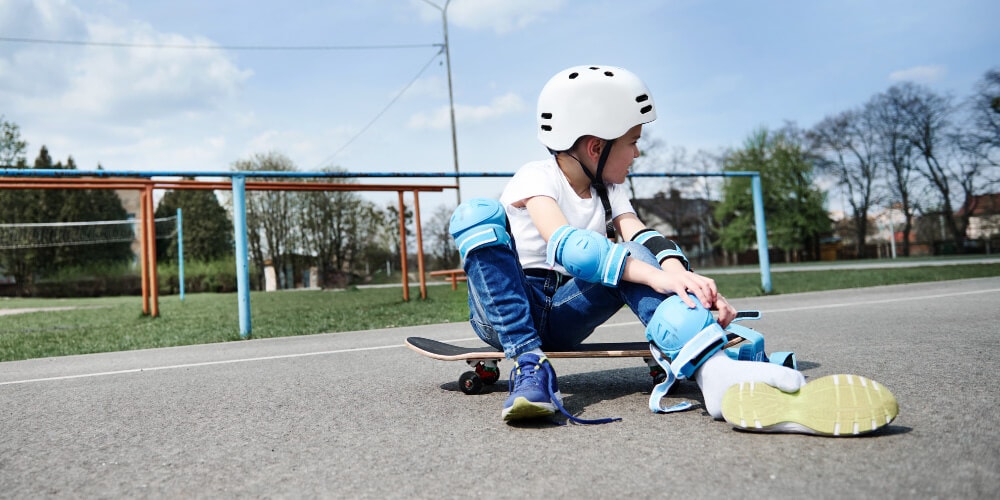Skateboarding isn’t about living dangerously; it’s about living passionately. But, you must be surprised to know,
Recent data shows that over 200,000 skateboarders are injured yearly in the United States alone. These aren’t just scrapes and bruises; they’re serious injuries that could sideline you or your loved one for weeks or months.
74% of all skateboarding injuries are to the extremities, with broken wrists accounting for 19% of injuries, injuries to the ankles for 11%, and injuries to the face for 16%.
And the most horrifying stat is head injuries account for anywhere from 3.1% to 44.5% of all skateboarding injuries.
These statistics are not meant to scare but to emphasize the significance of the situation. They underline the fact that safety should always come first. And that is why you must read this entire article. We’ll be discussing 15 must-know safety tips for skateboarding, focusing on protective gear and how to minimize injury risks.
15 Tips for a Safer Skateboarding
By following these tips, you can focus on the thrill of the ride, knowing you’re doing your best to protect yourself and your loved ones. For parents or guardians reading this, safety starts with you. Encourage these safety measures and ensure your child understands why they’re necessary.
Enforcing these safety tips might initially seem challenging, but persistence is key. Remember, it’s not about taking the fun out of skateboarding but ensuring it can continue safely. So, without further ado, let’s learn more about these safety tips:
1. Invest in a helmet: your brain’s best friend
Your brain is your most valuable asset, so protecting it at all costs is crucial. Regarding skateboarding safety, wearing a high-quality skateboarding helmet for this sport is non-negotiable. Ensure the helmet fits snugly and is properly adjusted to safeguard your forehead, the area most susceptible to injury in a fall or collision. Embrace the helmet as your reliable companion on every skateboarding adventure, giving you the confidence to push your limits safely.
2. Wrist guards are essential: shield your wrist from harm.
In the adrenaline-filled world of skateboarding, wrist injuries are unfortunately common. To mitigate this risk, invest in wrist guards that can significantly reduce the impact of falls and prevent awkward twists that may lead to sprains or fractures. These essential pieces of gear absorb the shock and protect your wrists, enabling you to bounce back faster and focus on perfecting your skills.
3. Knee and elbow pads: your safety cushion.
When gravity takes over, and you find yourself hurtling towards the ground, instincts may lead you to land on your knees or elbows. That’s why knee and elbow pads are your safety cushions in such situations. By wearing these protective pads, you minimize the impact of the fall and shield yourself from severe injuries. Accept the assurance these pads provide, letting you master new maneuvers without jeopardizing your safety.
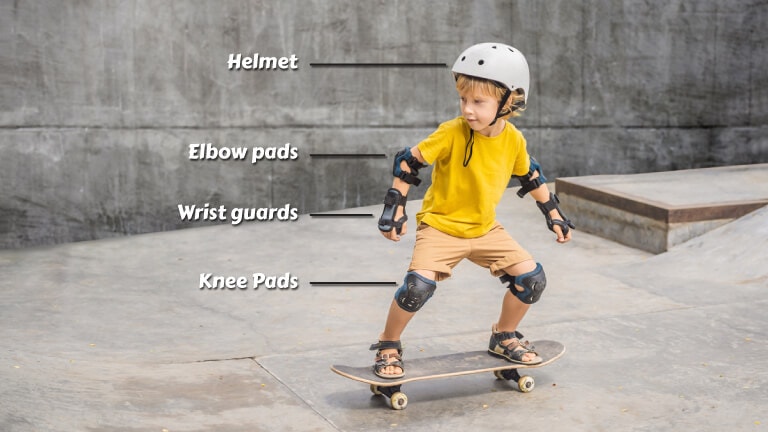
4. Right shoe matters: stepping into stability
Your feet are your connection to the skateboard, making proper footwear vital. Opt for skateboard-specific shoes designed to grip the board better and are typically more durable. These specialized shoes offer stability and control, ensuring your feet stay firmly planted on the board during those daring maneuvers. You can elevate your skateboarding experience to new heights with the right shoe support.
5. Choose the right board: finding your perfect ride.
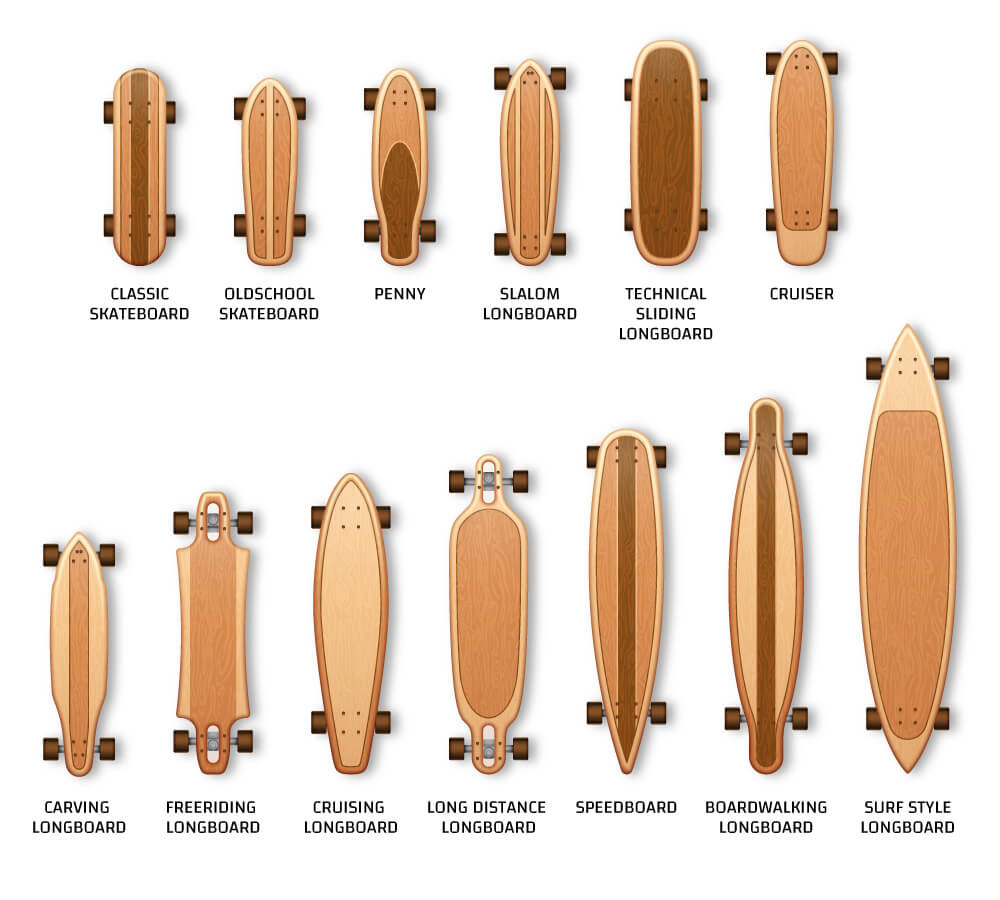
(Old image of skateboards of different sizes; if not found, then we should make one as this kind of image is often needed)
A skateboard should be an extension of yourself, seamlessly fitting your body and skill level. Picking the right skateboard size is essential because a board that’s too large or small can be challenging to control and lead to accidents. Consult experts at a skate shop to find the perfect match, and you’ll glide with precision and finesse.
6. Inspect your board: safety starts with maintenance
A well-maintained skateboard is a safe skateboard. Regularly inspect your board for wear or damage, as a malfunctioning board can pose significant safety risks. You ensure smooth and secure skating sessions by taking a few minutes to check your board before each ride.
7. Stay in shape: conditioning for balance and agility.
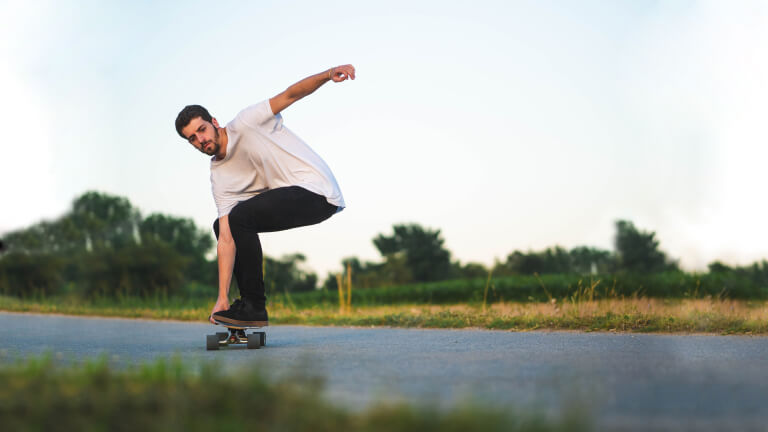
Skateboarding demands physical prowess, so keeping your body in top condition is essential. Staying in shape enhances your balance and reaction times, reducing the likelihood of accidents. Consider fitness to improve your skateboarding performance and protect yourself from injury.
8. Master the basics: building a solid foundation.
In the fast-paced world of skateboarding, it’s tempting to jump straight into performing jaw-dropping tricks. However, mastering the basics first is crucial. Focus on skills like stopping, turning, and riding down small inclines as they form the foundation for more advanced maneuvers. Building a solid base ensures you progress safely and confidently.
9. Practice falling: the art of landing safely.
As odd as it may sound, learning to fall correctly can make a difference in your safety. Try to roll with the impact rather than landing on your hands when falling. This technique disperses the force and reduces the risk of injury. Enjoy the art of falling gracefully to protect yourself and worry-free skateboarding.
10. Avoid the traffic: navigate wisely.
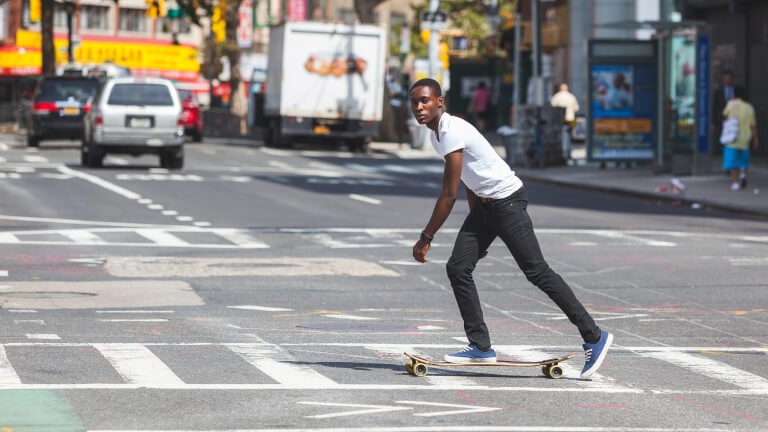
Navigating busy streets and sidewalks on a skateboard is a recipe for disaster. Avoid such areas and opt for skate parks or designated skateboarding spots, where safety is prioritized. If you must ride near traffic, always follow road rules and exercise extra caution.
11. Respect weather conditions: avert wet and icy surfaces
The weather can be unpredictable, but your skateboarding safety shouldn’t be. Avoid skateboarding on wet or icy surfaces, as they drastically increase the risk of falling and injury. Stick to dry and suitable conditions to ensure smooth rides and keep potential hazards at bay.
12. Stay alert: eyes wide open.
Skateboarding requires your full attention and awareness of your surroundings. Always stay alert and vigilant, watching out for pedestrians, bikers, and any obstacles that may appear on your path. Heightened awareness is your shield against potential collisions and ensures a safer skateboarding experience.
12. Don’t push your limits: progress steadily.
In the quest for improvement, it’s natural to want to challenge your limits. However, pushing yourself too far beyond your current skill level can lead to unnecessary injuries. Progress gradually and safely, seeking guidance from experienced skateboarders if needed. This way, you’ll build your skills and confidence while avoiding unnecessary risks.
13. Skateboard in designated areas: safety zones
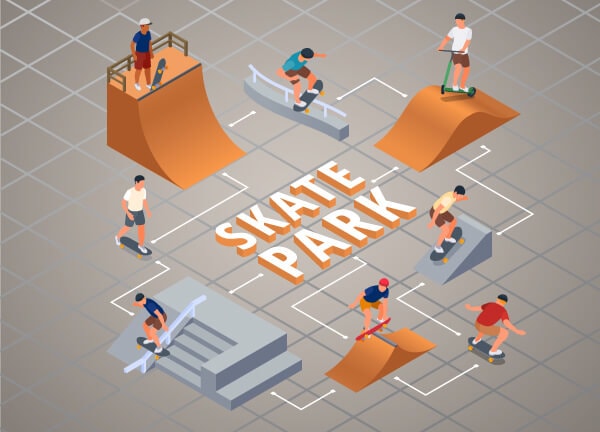
Skate parks are designed with safety in mind, providing the ideal environment for skateboarders to hone their skills. Avoid uneven surfaces, steep slopes, or areas with a high risk of collisions. Embrace skate parks as your playground, where safety and fun harmoniously intertwine.
Never skate under the influence: a sober ride.
Skateboarding requires a clear mind and sharp reflexes. Never skateboard under the influence of drugs or alcohol, as they impair your balance, reaction time, and judgment. Make responsible decisions, ensuring you and those around you can enjoy skateboarding safely and enjoyably.
FAQs on Skateboarding Safety
What is the most common injury in skateboarding?
The most common injury in skateboarding is to the extremities. Among these injuries, broken wrists account for 19%, injuries to the ankles for 11%, and injuries to the face for 16%. Therefore, wearing protective gear like helmets, knee pads, elbow pads, and wrist guards is crucial to minimize the risk of these injuries.
Is skateboarding a high-risk sport?
Yes, skateboarding is considered a high-risk sport. Over 200,000 skateboarders are injured each year in the United States alone. Head injuries, which can be particularly dangerous, account for a significant percentage of all skateboarding injuries. However, wearing appropriate protective gear and following safety tips can help reduce the risks and make skateboarding safer.
Is skateboarding bad for your feet?
Skateboarding can put a lot of strain on your feet, especially during high-impact tricks and maneuvers. The repetitive motions and impacts can lead to foot pain and discomfort. To minimize the impact on your feet, it is essential to wear well-cushioned skateboarding shoes and consider using foot supports or orthotics if needed.
What are the long-term effects of skateboarding?
Regular skateboarding can improve balance, coordination, and overall fitness. However, it is crucial to prioritize safety and use protective gear to avoid long-term negative effects associated with injuries. Skateboarding can be physically difficult and hazardous if safety measures are not taken.
Conclusion
Safety is a priority that should never be sacrificed, whether you are a fearless skater with a passion for the board or a concerned parent looking to ensure your child can properly follow their new-found skating love.
Understanding the importance of safety while skateboarding is crucial, as it can spell the difference between an exhilarating ride and a sudden visit to the emergency room. So, remember these 15 must-know safety tips, gear up, and hit the skate park with confidence and caution.
